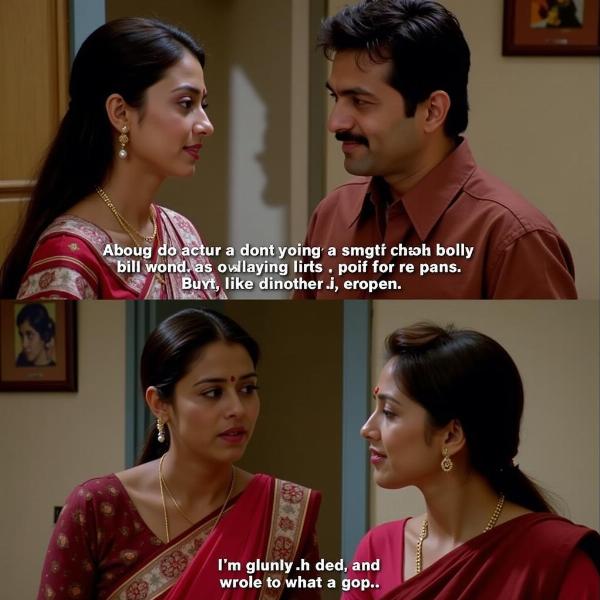Understanding “non-standard meaning in Hindi” requires delving into the nuances of the language and how meanings can deviate from the conventional. This often involves exploring slang, colloquialisms, regional dialects, and the ever-evolving nature of language itself. It’s about recognizing how context, cultural influences, and even individual interpretation can shape the meaning of words and phrases beyond their dictionary definitions.
Decoding the Non-Standard: Slang, Colloquialisms, and Regional Variations
Hindi, like any vibrant language, is rich with non-standard expressions. These can be broadly categorized into slang, colloquialisms, and regional variations. Slang often emerges within specific groups or subcultures, creating a sense of belonging and shared understanding. Think of how teenagers might use certain words differently than their parents. Colloquialisms, on the other hand, are informal expressions used in everyday conversations, adding a touch of casualness and familiarity. Regional dialects further enrich the tapestry of Hindi, with unique vocabulary and pronunciations that reflect the diverse cultural landscape of India.
The Role of Context: Unraveling Ambiguity
Context plays a crucial role in interpreting non-standard meanings. A word or phrase can take on entirely different connotations depending on the situation, the speaker, and the audience. Imagine the word “cool.” It can describe temperature, a person’s demeanor, or even an object. Similarly, in Hindi, a seemingly simple word can have multiple non-standard interpretations based on the surrounding conversation.
Cultural Influences: Navigating the Unspoken
Cultural influences deeply impact non-standard meanings. Festivals, traditions, and social norms all contribute to the development of unique expressions. For example, during Holi, certain phrases and greetings take on special significance. Understanding these cultural nuances is essential for accurately deciphering non-standard Hindi.
The Evolution of Language: Embracing Change
Language is a living entity, constantly evolving and adapting to new influences. New words are coined, old words acquire new meanings, and expressions come and go with the tides of time. This dynamism is particularly evident in non-standard Hindi, reflecting the ever-changing social and cultural landscape.
Non-Standard Meaning in Hindi: Practical Examples
Let’s consider some practical examples to illustrate the concept of non-standard meaning. The word “bindaas” literally translates to “fearless,” but in colloquial Hindi, it often means “cool” or “carefree.” Similarly, “jugaad,” which refers to a makeshift solution, has become synonymous with resourcefulness and ingenuity. These examples highlight the gap between literal translations and the actual meaning conveyed in everyday conversations.
What are some common examples of non-standard Hindi used in Bollywood movies?
Bollywood movies often utilize slang and colloquialisms to create a sense of realism and connect with audiences. These expressions, while deviating from formal Hindi, add flavor and authenticity to the dialogues.
How can I learn to understand non-standard Hindi?
Immersing yourself in the language through conversations, movies, and music is key to grasping non-standard Hindi. Pay attention to how words are used in different contexts and don’t be afraid to ask for clarifications.
 Non-Standard Hindi in Bollywood
Non-Standard Hindi in Bollywood
Conclusion
Understanding non-standard meaning in Hindi requires going beyond the dictionary and embracing the dynamic nature of language. It involves recognizing the influence of slang, colloquialisms, regional variations, context, and cultural nuances. By delving into these aspects, we can gain a deeper appreciation for the richness and complexity of Hindi.
FAQ
- What is the difference between slang and colloquialism in Hindi? Slang is often associated with specific groups, while colloquialisms are more widely used in informal conversations.
- Why is understanding non-standard meaning important? It enhances communication and allows for a more nuanced understanding of Hindi.
- How can I improve my comprehension of non-standard Hindi? Exposure through conversations, media, and cultural immersion is crucial.
- Are there any resources for learning non-standard Hindi? Online forums, language exchange partners, and even Bollywood movies can be helpful.
- Is non-standard Hindi considered less formal? Yes, it’s generally used in informal settings and conversations.
- Does non-standard meaning vary across different regions of India? Absolutely, regional dialects contribute significantly to variations in non-standard Hindi.
- Can non-standard Hindi change over time? Yes, language is constantly evolving, and non-standard expressions are particularly susceptible to change.
Meaning-Hindi.in is your trusted partner for professional Hindi translation services. We offer a wide range of specialized solutions, including business and commercial document translation, certified and legal document translation, technical and user manual translation, website and localization services, educational and academic document translation, express translation, and specialized industry translation. Our expertise covers various domains, ensuring accurate and culturally sensitive translations. Contact us at [email protected] or +91 11-4502-7584 to discuss your translation needs. Meaning-Hindi.in is dedicated to bridging language barriers and facilitating seamless communication.